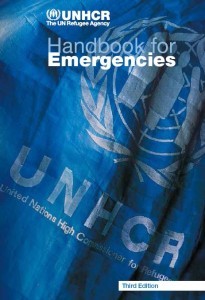
This document contains documentation to help UNHCR and WASH actors install emergency trench latrines (poles and plastic) in refugee settings. The package includes: Technical Drawings; Step by Step Construction Drawings; Bills of Quantity; Material and Workmanship Specifications; and Design Calculations.
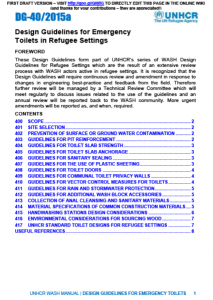
This document contains guidelines for toilets in refugee settings including: site selection; prevention of surface or ground water contamination; pit reinforcement; toilet slab strength; toilet slab anchorage; sanitary sealing; use of plastic sheeting; toilet doors; privacy walls; vector control measures; rain and stormwater protection; wash block accessories; collection of anal cleansing and sanitary materials; material specifications; handwashing stations design considerations; and environmental considerations for sourcing wood .
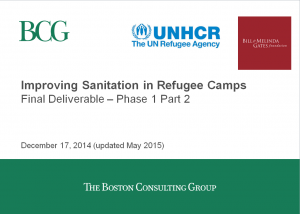
Understand the starting point – existing and potential “waste-to-value” solutions and business models for relevant camp contexts and their host communities
– Focus on East Africa
Assess the feasibility and impact of deploying alternative technologies, upgrading or revising existing technologies available now and the business models that could support them or off-set the cost of their operation in camp contexts
Recommend specific companies and technologies (including local partners) that may be more suitable and sustainable for refugee camps
Share findings from the analysis to inform decisions made by UNHCR and identify key stakeholders that will be critical to success in local contexts (e.g., local governments, key influencers, etc.)
Tags: Excreta Management. Languages: English. Organisations: BCG and UNHCR. Categories: WASH Research Documents.
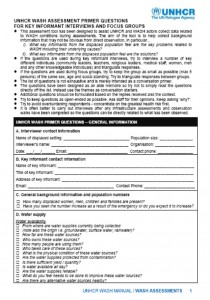
These WASH related primer questions have been designed to assist UNHCR and WASH actors collect data from key informants and focus groups during WASH assessments. The list of questions is not exhaustive and is merely intended as a conversation primer (aide memoire).

This document contains documentation to help UNHCR and WASH actors install emergency trench latrines in refugee settings. The package includes: Technical Drawings; Step by Step Construction Drawings; Bills of Quantity; Material and Workmanship Specifications; and Design Calculations.
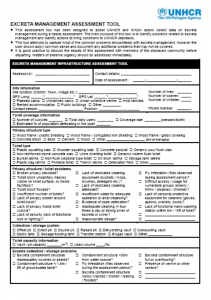
This assessment tool has been designed to assist UNHCR and WASH actors collect data on excreta management during a needs assessment. The main purpose of this tool is to identify problems related to excreta management and identify actions to bring conditions to UNHCR standards.
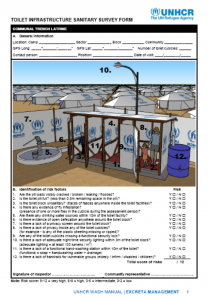
This sanitary survey form can be used to monitor and evaluate the condition of communal and public toilet blocks in a refugee setting. The main purpose of this tool is to rapidly identify public health and protection related risks. The tool can also be used in the medium term to monitor trends in the condition of toilet infrastructure.
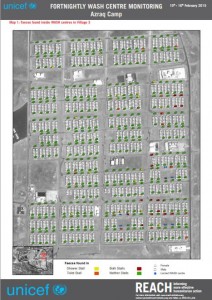
This document provides a snapshot of WASH service provision in Azraq Refugee Camp undertaken on the 15th – 16th February 2015. The document document provides an overview of the conditions in 912 WASH blocks with a focus on structural integrity, safety, access, and cleanliness.










